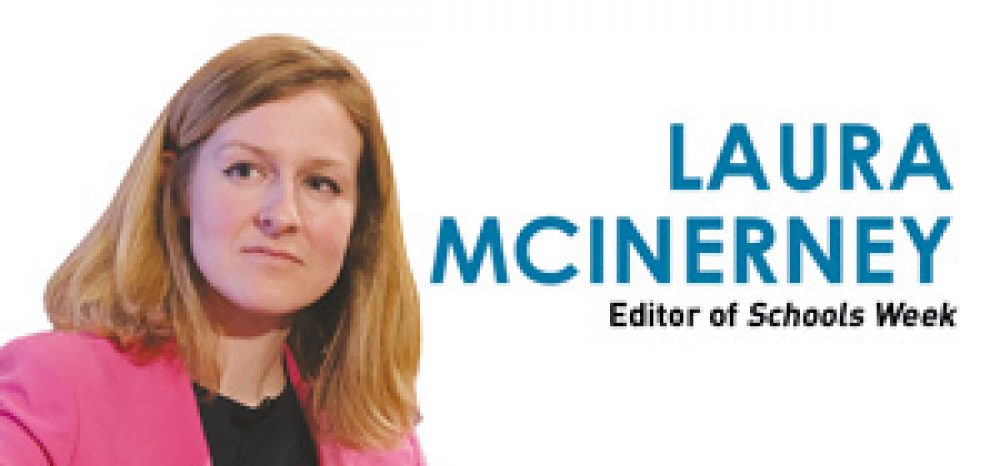At 10am today Amanda Spielman, the Chief Inspector, launched Ofsted’s Annual Report.
As ever, there were pre-arranged soundbites and heavily emphasised points on the radio and television.
But if you dig down into the report there are always a few extra nuggets that you may have missed, which are worth watching.
1. 8% of ‘outstanding’ schools were last inspected in 2006-07
Earlier this year we showed how over 1,200 schools had not been inspected for seven years – and word on the ground is that this gap is bothering the inspectorate. The report notes how a change in the law in 2011 means Ofsted is “unable to carry out regular inspections” in ‘outstanding’ schools, because the rules say they will stay away. BUT…
2. Of the 141 ‘outstanding’ schools inspected this year, only three kept their grade
If Ofsted is worried about an ‘outstanding’ school it can inspect it. This year, of the 141 investigated, just three kept their grade. All told, 43 slipped to ‘requires improvement’, and 19 declined to ‘inadequate’. As the report notes, these schools were flagged for problems, so they are not representative of the whole. But you can see why Ofsted are nervous about letting schools slide on forever without reinspections.
3. Only 25% of primary schools are academies
Getting sensible data out of the Department for Education about numbers of school types is often fraught. Ofsted’s figures, however, show that 25 per cent of primary schools are academies. A much smaller number than you might think given the attention academies get from politicians. Maybe that’s because 70 per cent of secondary schools are academies. Which goes to show the extent of fragmentation between the two sectors.
4. Fewer ‘requires improvement’ schools got a higher inspection grade this year than in any other year
Or, to put this another way, once schools are becoming ‘requires improvement’, they tend to stay there. This echoes a report from around 2011 by Becky Francis, now the head of the UCL Institute of Education, where she suggested schools become “stuck” in the grade three zone and find it hard to climb out. One reason for the academy takeover programme was to break this mould – however, it doesn’t appear that has now happened. In all, 33 per cent of requires improvement’ primaries did not improve, and neither did 58 per cent of secondary schools.
‘
5. 65 ‘inadequate’ schools have not become academies – even after 17 months
In 2015, education secretary Nicky Morgan said one day in a failing school was “a day too long” and that her new laws compelling inadequate schools to become academies would change the length of time it took to turn around a school’s fortunes. However, the Ofsted report today says that of 170 schools rated inadequate in April 2016, 65 are still open and have not become an academy. In the last nine months, 113 maintained schools became eligible for an academy order due to their low performance, but are still open.
6. There are around 1,000 multi-academy trusts
Last year around 800 multi-academy trusts were registered and able to take over the operation of schools. In the past year this has increased by 29 per cent to around 1,000, meaning there are also now 1,000 multi-academy trust CEOs or executive principals.
7. Multi-academy trusts have five schools on average
Of the 1,000 multi-academy trusts in existence, around 100 have nine schools, around 30 have 20 or more schools, but half have three or fewer schools. On average, each multi-academy trust chief oversees just five schools. This is a long way short of estimates of around 20 schools to make trusts viable.
8. 33 multi-academy trusts are running their own teacher training programmes
Ofsted also inspects teacher training, so they have a good idea of the way training is happening in schools. Thirty-three multi-academy trusts have their own school-centred ITT partnership (that is, they train teachers via their own programme – most often School Direct). Of the 31 inspected so far, 13 are ‘outstanding’, and 18 are ‘good’. Given many new teachers stay in the schools where they train these trusts have a substantial recruitment advantage.
9. Special needs pupils are increasingly taught in special schools
Instead of merely pointing out the high proportion of special needs schools with outstanding grades (which is good, but now very well known), Ofsted included the gem that 45 per cent of pupils with a statement or Education, Health and Care Plan now attend a state-funded special school compared with 40 per cent in 2010. One of the issues we revealed is the shift in diagnosis, away from speech and language, and towards autism for which there is an increasing trend of specialist provision.
More on Ofsted’s annual report…
More challenging KS2 SATs are leaving poorer pupils behind
RI schools fail to improve at record levels
Religious schools increasingly ‘flouting’ British values
130 schools not rated ‘good’ for over a decade








Here’s a tenth fact: becoming an academy didn’t improve 37 of 52 secondary schools judged less than good since 2005.
http://www.localschoolsnetwork.org.uk/2017/12/becoming-an-academy-didnt-improve-37-of-52-secondary-schools-judged-less-than-good-since-2005
If MATs train their own teachers, the training is likely to be geared to the MAT’s preferred methodology and ethos. This means the teachers will not be prepared to teach in any type of school.
Or better prepared.
Neither of us has any evidence to back up either assertion, so any statement is pure speculation.
By the way, if you posit a theory for which you have no evidence (hence why you presumably used the word ‘likely’), you can’t then follow that up with an absolute statement that the teachers “will not be prepared”. You could say that the teachers “might not be prepared”, because that refers back to the uncertainty of the initial assumption.
This isn’t meant to be nit-picking, it’s an aversion to spin from wherever it arises …
But if MATs take on those “inadequate” schools, where will they move their challenging pupils to?